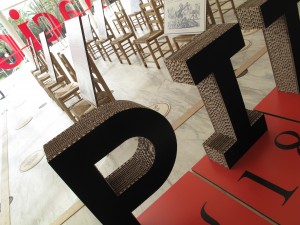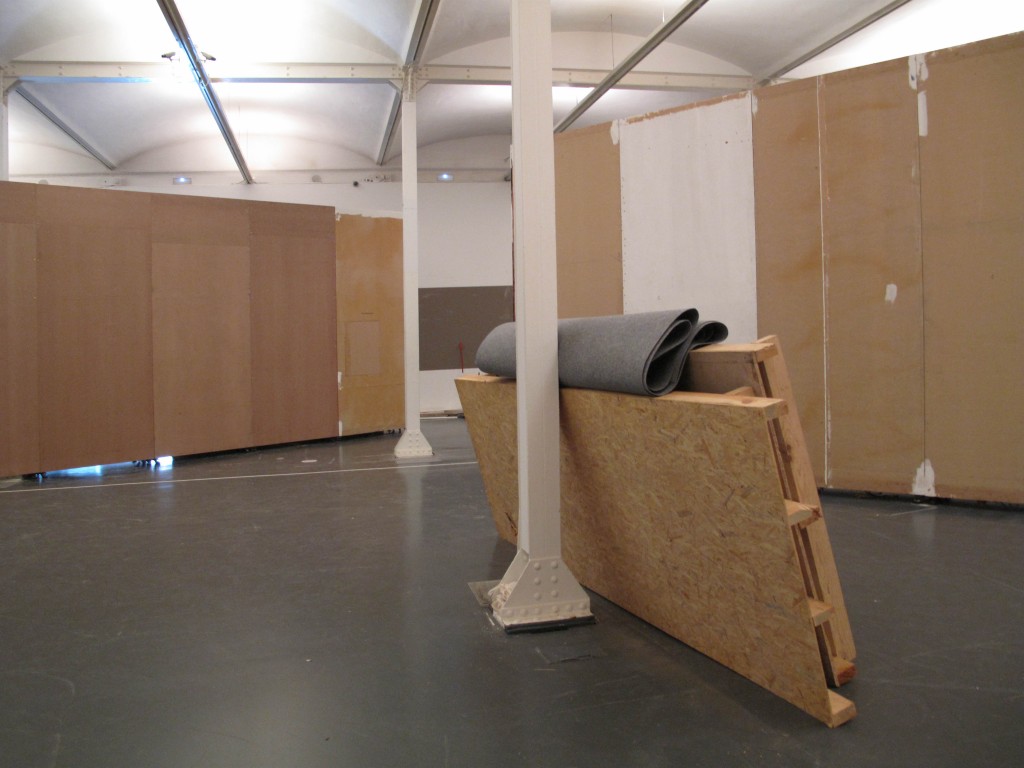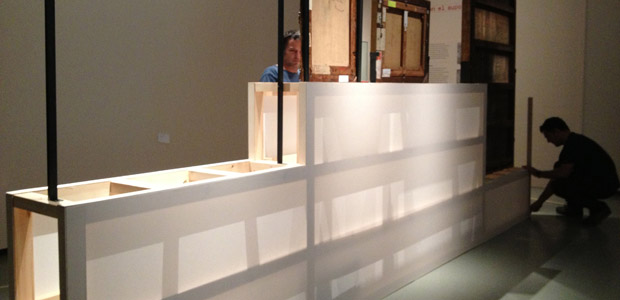
Shigeru Ban, currently the Pritzker Architecture Prize, in 1986 he already showed us the potential of biodegradable materials within museums, making use of tubular structures of paper, that have subsequently been used so much in his singular architectures.
Within the rich universe of the temporary exhibitions, we live in a process of packing and unpacking. The majority of museums and cultural centres of the world, and especially the art museums, allocate one or more rooms to programming a series of exhibitions each season, each with a start and finishing date. Constructing for deconstructing, that is what ephemeral architecture is based on. It is for this reason of “expiry” that it makes it necessary to think of the impacts that the construction of spaces that host the travelling works can generate, among these being environmental sustainability. It is necessary to avoid the design of temporary exhibitions that create permanent waste. To therefore think about criteria of ecodesign.
Basic guidelines to guarantee sustainability in the museums
First and very important: The application of ecological design doesn’t affect the other properties of the product, and under no circumstances should economic or aesthetic aspects be forgotten. It’s not true that the most sustainable materials are the most expensive, and it’s not true that sustainable materials have a “tacky” appearance.
It’s a question of not generalising and designing with the knowledge of the material, there’s much more than we think behind such a serious topic as sustainable construction, the best known example being: the cardboard panels, it’s just a beginning, but on the other hand very efficient, and above all in terms of visibility.

Exhibition Pitarra, 1864-1866 at the TNC –The National Theatre of Catalonia–, in which chairs from a scenography were reused that helped to contextualise the contents, the artwork consisted of water-based inks printed on panels of sandwiched cardboard. (Photo Anna Alcubierre).
Second and very useful: Aiming for 100% sustainability in the carrying out of exhibitions is a difficult task, as a piece of advice, it doesn’t need to be black or white, the range of greys lets us continue working with common sense, the question is to practise it as far as possible.
Third and textbook: we can contemplate three aspects in the process;
1. Sustainability in the choice of materials without losing quality. The use of renewable, recycled or recyclable, biodegradable and local materials.

Setting up of the exhibition Sorolla the colour of the sea in the CaixaForum Barcelona, in which the system is used of reusing walls based on an internal structure of steel, with wooden panels and posterior finishing with water-based paint on kraft paper. (Photo Anna Alcubierre).
In the case of permanent exhibitions, use long-lasting materials and with a capacity for aging.
2. Sustainability in the production processes. To avoid different types of materials so as to facilitate the recycling. Minimisation of the maintenance and surface treatment of the materials. Selection of the chemical products which are least harmful for the environment in the fireproofing processes and graphic printing.

Setting up the exhibition The museum explores. Works of art under examination in the Museu Nacional d’Art de Catalunya. The simplicity of the natural materials, in a pure state, untreated, provides an atmosphere of “art studio” in relation to the expositive discourse. (Photo Anna Alcubierre).

Setting up the exhibition Secret images, Picasso and the erotic Japanese print in the Museu Picasso de Barcelona, in which the semi-transparent walls that divide the spaces are, at the same time, the support for the graphic information by means of direct printing on stretched cellulose tissue paper with a poplar pinewood frame. (Photo Anna Alcubierre).
3. Sustainability in the energy expenditure and maintenance. The use of long-lasting and low energy consumption lighting material, as well as audio-visual equipment with an ecological label provided it is possible. Minimisation of the maintenance of the installation.
It is therefore easy to act.
Can we as museums allow ourselves to construct ephemeral spaces that generate external waste?Anna Alcubierre
espai_e







